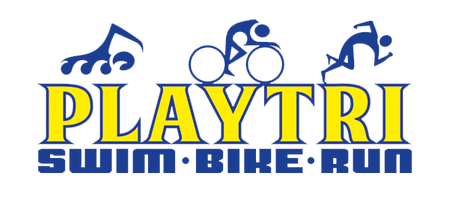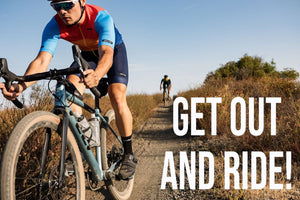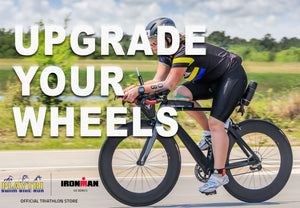
BEN'S FIRST YEAR IN TRIATHLON
How long have you been doing triathlons?
I just got into triathlons earlier this year. I started training in March and now I’ve completed three different races. The first was the Historic McKinney Kiwanis sprint tri in April, the second was the Disco olympic distance tri in September, and the most recent was the Oil Man Texas 70.3 in November.
What/who inspires you to compete?
Back in college I was a competitive rower, we were Division 1 so we’d train about 20 hours a week from September through May with some light offseason work over the summer. I loved that level of training and I’ve always been drawn to the fitness/endurance sports like rowing, running, swimming, etc. Rowing obviously isn’t as big in Dallas as it was in the northeast so when I moved down here for work, I was looking for a new sport to stay in shape and keep competing. I’d seen that Dallas had a big triathlon presence so I figured I would give it a try (no pun intended).
Between starting work and adjusting to Texas I didn’t do any regular training for about 3 years and lost most of my fitness. I was looking for something to motivate me to start training regularly when an old teammate from college started training for an IRONMAN 140.6 and jokingly offered that I should join him for the race. It got me thinking about triathlons again since I’d been talking about doing them since I moved so I set my sights on completing a 70.3 IRONMAN this year.
 I work best when I have something I’m training for. If I’m going to the gym on my own it’s all too easy to come up with excuses like “that was a long day at work and I’m tried” or “I’ll make it up tomorrow.” If I know I have to show up on race day then those excuses all go away because every day I skip makes the race that much harder. The 70.3 was the right distance for me to shoot for. I knew I could complete a sprint distance without training and with some regular training I’d be able to do an Olympic (I wouldn’t be fast but I could definitely complete it). The 70.3 was far enough that I wouldn’t be able to finish it without some serious regular training, but not so ambitious as to start with a full 140.6, which is still pretty intimidating.
I work best when I have something I’m training for. If I’m going to the gym on my own it’s all too easy to come up with excuses like “that was a long day at work and I’m tried” or “I’ll make it up tomorrow.” If I know I have to show up on race day then those excuses all go away because every day I skip makes the race that much harder. The 70.3 was the right distance for me to shoot for. I knew I could complete a sprint distance without training and with some regular training I’d be able to do an Olympic (I wouldn’t be fast but I could definitely complete it). The 70.3 was far enough that I wouldn’t be able to finish it without some serious regular training, but not so ambitious as to start with a full 140.6, which is still pretty intimidating.
A good friend of mine from college’s dad, John Hupf, lives in the area and talked to me about his IRONMAN experience. He was nice enough to have me over and walk me through how triathlons work (training, transitions, etc.) along with the gear and nutrition stuff he used. He sent me a great summary of how to efficiently set up my transition area and I still read through it before every race to remind myself of some simple tricks to shave off a few sections.
Another big motivation is my fiancée, Vinati. She’s super supportive of me and all my crazy training plans. When I told her what I was trying to do I fully expected her to try and talk me out of it considering what a time commitment it was; instead her first response was “I’m going to make a poster to cheer you on.” She drew it herself with diagrams of the events, a place for my number, and has been at every one of my races waiting at the finish line with a poster and a Clif Bar. It also helps because while I’m busy racing I can’t pay much attention to what the other competitors are doing. So she’ll scout out what the fastest people are doing and after the race she’ll tell me about their flying dismounts and wetsuit stripping that I need to try.
Preparing for Race Day
 Before starting my training plan, I would have ranked my events from strongest to weakest as swim then run then bike. I used to be on the swim team in high school and did a lot of running to cross train for rowing but I just didn’t do a lot of cycling. So, I specifically focused on cycling in the training plan. When it came time for the race, I felt the benefits of the training and I’d actually say my events flipped where my strongest was the bike then run then swim.
Before starting my training plan, I would have ranked my events from strongest to weakest as swim then run then bike. I used to be on the swim team in high school and did a lot of running to cross train for rowing but I just didn’t do a lot of cycling. So, I specifically focused on cycling in the training plan. When it came time for the race, I felt the benefits of the training and I’d actually say my events flipped where my strongest was the bike then run then swim.
I attended an open water swim clinic through PlayTri so I learned a few of the basic techniques for sighting. However, I’d only ever done two open water swims before the race total, once for the clinic and once for the disco tri. I quickly learned that I swim in a straight line but I need a lot more practice sighting because I’d easily get point in the wrong direction. It was overcast and hard to see the buoys so I ended up swimming an extra 200 yards (10%) mostly at the beginning before I got into my rhythm. Then towards the end as we started to group into people swimming at a similar pace I was able to find a couple others to sight with and start using the techniques we’d practiced. Because of the extra distance I didn’t quite get the time I wanted but that was by far the longest open water swim I’d ever completed so I was just happy to get through it.
The bike was really where I started to pick up speed. Now that I had my bike computer to look at it became a lot simpler. I had my targets for power, cadence, and heart rate so it just became a matter of sticking to the plan and riding my race. It was a great, flat, fast course. There were thunderstorms the night before/morning of so the course was wet, which meant I started out slow to get comfortable with the conditions and built over time. I got a new set of aero wheels after the Olympic disco tri so I maintained a faster pace at a lower wattage over more than double the distance, which always feels good. They cut right through the wind and I ended up passing a number of people on the bike.
I did a good job keeping up with nutrition and hydration on the bike so I felt strong going into the run. I maintained a solid pace up until around mile 9 or 10. That’s when I started hitting a mental wall as it was my first 70.3 distance. During training I admittedly did cut some of the longer bike/run combos short on the run and I definitely paid for it here. However, I held with it and no joke, at mile 13 of the run I saw one of the other competitors in my age group ahead of me and slowing down. I missed 1st in my age group at the disco Olympic tri by 24 seconds so I wasn’t going to have that happen again. I sprinted past him and ended up taking 2nd in my age group beating out 3rd place by 14 seconds over a 5-hour and 8-minute race. It just goes to show you it’s not over until you cross the finish line and every second really does count.
I was super excited with my final time. It was surreal to look back over the 7-month journey from never having done a triathlon to completing a 70.3 IRONMAN and the sense of accomplishment that came with it.
How did the performance testing help you train & race?
 I did most if not all of the performance testing Playtri offers and it all came together to pay off. The biggest benefit I got from those tests was taking the guess work out of pacing and nutrition for my first 70.3 IRONMAN distance. This was going to be a 5-6 hour race, which was more than double the furthest distance I had ever completed for racing or training before starting and I had no idea where to even begin.
I did most if not all of the performance testing Playtri offers and it all came together to pay off. The biggest benefit I got from those tests was taking the guess work out of pacing and nutrition for my first 70.3 IRONMAN distance. This was going to be a 5-6 hour race, which was more than double the furthest distance I had ever completed for racing or training before starting and I had no idea where to even begin.
They say that there are 4 events to distance triathlons: swim, bike, run and nutrition. Most of my rowing races lasted anywhere from 6-20 minutes so hydration and nutrition were all new to me. The same could be said for sodium loss while sweating. The bike/run calorie testing and the precision hydration test took all of the guess work out of it and simplified things greatly. Based on the heart rate zones I wanted to target for long course competition I needed to replace 400 calories of carbs per hour for the bike and run. This meant eating a pack of GU every 15 minutes, so I just set up an alert on my bike computer and watch as a reminder.
From the precision hydration test I found out I’m a salty sweater (higher than average concentration), which I wouldn’t have expected. I never took electrolyte supplements before, normally I’d just drink water and occasionally Gatorade to help cover my sweat loss. I couldn’t explain it but the day after my longer training runs (80+ minutes) I’d have a headache and feel terrible. After I took the hydration test, I started trying the salt tablets in my drink and I immediately felt the benefits on my next run. It was like night and day, I was able to maintain my pace more consistently but also the next day I felt so much better that I was able to continue training at a higher intensity. Now I take those salt tablets any time I’m working out for more than 90 minutes. I’ve heard people jokingly refer to them as the elixir of life and after taking them myself I fully understand where it comes from. Now I just drop one of those tablets in my sports bottle and drink one of them every hour. Between the calorie and hydration tests I’m now able to simplify my nutrition down to a Gu pack every 15 minutes and a bottle with one of the salt tablets every hour so it’s easy to follow and I don’t have to worry about this critical part of the race.
The next step was figuring out how to pace myself to run a good race and put up a time I could be proud of while not going too hard and bonking towards the end. Through the blood lactate testing I got a very accurate measurement of my heart rate and power zones with guidance on ranges to use for different race lengths. These were what I use as targets for pacing my 70.3. On the bike, my target power for long course competition was 150-204W with a heart rate of 130-159 bpm. I was aiming for over 200 watts at 155 bpm and I ended up doing 202W at 154 bpm so I kept a good constant output the entire time. On the run my heart rate zone was 150-169 for long course competition. I was aiming to stay around 165 bpm and landed exactly there. As I mentioned before I was holding a solid pace but I needed to do more distance runs to get comfortable keeping that level of exertion up after a full 56 mi bike. Needless to say, these heart rate & power zones helped me pick aggressive paces that I was able to maintain for the race.
I also did the RunLabs gait analysis because I was having knee pain on my runs up around 10+ miles. They had some simple recommendations on fixing my crossover step to get rid of the knee pain and it’s all but gone away. They also recommended a new set of shoes and increasing my cadence to get a more efficient foot strike. Those simple changes helped me shave tens of seconds off my mile split while maintaining the same heart rate. I did the swim analysis where coach Stackle where helped me identify 5 different things to work on to get me free speed without having to work that much harder. I did that session close to the race so I’ll keep practicing to make those changes muscle memory, still working on it.
The Resting Metabolic Rate (RMR) test helped me dial in my calorie requirements so I could smartly lose weight without compromising my training. I planned to drop a few pounds to make the bike and the run easier. From when I started competing in April through this last race, I lost ~10 pounds and I could really feel the difference on the run where my knees didn’t hurt as much.
Needless to say, I ran the full battery of performance tests and put all of the information to use in my first ironman 70.3 race.
What are your next goals?
At this point I’m hooked. I love the volume of training, the strategy of transitions, researching the equipment, and analyzing all the data from my workouts. I plan on working my way up to complete a full IRONMAN 140.6. To do this I’ll have to complete my first marathon as a part of the training to convince myself I can. I plan on continuing to compete in the Olympic & 70.3 distances, along with some sprints for fun. I’m hoping to break the 5-hour mark on my next 70.3 assuming all goes well.




